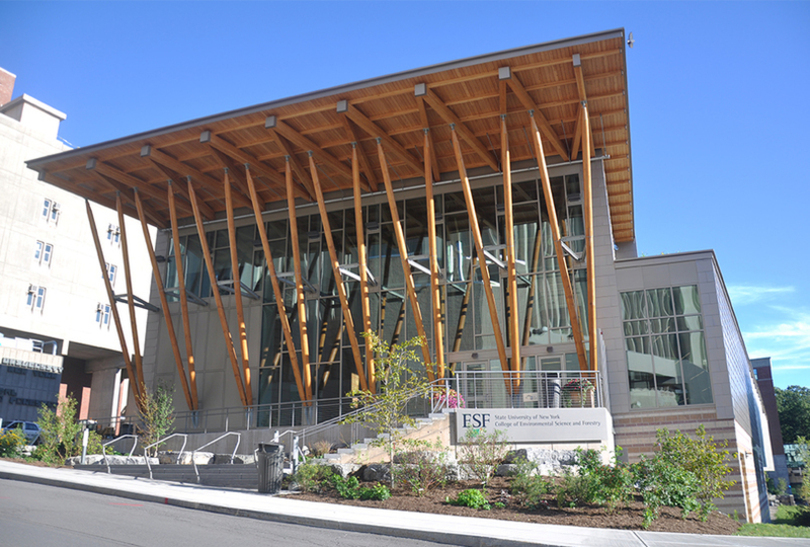Syracuse University, SUNY-ESF officials detail services agreement

Maragaret Lin | Staff Photographer
SU will assist SUNY-ESF in providing health, wellness and IT services to its students, rather than SU.
The agreement between Syracuse University and SUNY-ESF to have SUNY-ESF transition into providing health and wellness services to its students and information technology (IT) services to its students, faculty and staff was two years in the making.
The State University of New York College of Environmental Science and Forestry President Quentin Wheeler said in an email that shortly after he and SU Chancellor Kent Syverud were both appointed to their positions in fall 2013, they began reviewing services provided by SU to the SUNY-ESF and whether the cost structures for such services were “fair and appropriate” for both universities.
“Many different services had been lumped together, making the evaluation of costs and values difficult,” Wheeler said. “We have worked … so that a new arrangement could be defined that was up to date and fair to both institutions.”
That arrangement, which includes a new five-year services agreement, was announced last month.
Under it, SU agreed to assist SUNY-ESF in making health and wellness services available to its students, beginning in the 2016-17 academic year. Additionally, SUNY-ESF will begin providing IT services to its students, faculty and staff in about three years, said Kevin Quinn, SU’s senior vice president for public affairs.
Along with the services agreement, the two institutions also announced the launching of a renewed academic and research-based partnership.
Quinn said that the decision to have SUNY-ESF provide health and wellness services to its students was the result of SU seeing an increased demand from its students for those services.
“Given our increased demand, we mutually agreed that SUNY-ESF beginning to provide its own health and wellness services to its students would, at the end of the day, be in the best interest of both institutions and both groups of students,” Quinn said.
SU’s assistance in the transition will consist of “administrative types of things,” Quinn added, including ensuring that SUNY-ESF student records and casework are transitioned smoothly.
Officials from SU’s Health Services did not respond to emails requesting comment.
The process of SUNY-ESF transitioning into providing IT services will take multiple years because of “the complex integration we have of IT across both institutions,” Quinn said.
Wheeler said it makes sense for SUNY-ESF to provide its own IT services in order to become compatible with IT standards across the SUNY system.
Samuel Scozzafava, chief information officer and vice president for Information Technology Services at SU, referred a request for comment to Quinn.
SU and SUNY-ESF are also trying to finalize the focus of their renewed research-based partnership. The two institutions are in the process of determining what areas of research they will collaborate on, Quinn said.
“We have so many areas we can work together in,” Quinn said. “You can’t do all of them, but we want to find the two or three areas that both schools have an outstanding reputation for and that both schools would benefit from.”
Additionally, Wheeler said there is still an ongoing collaboration between SU and SUNY-ESF to identify other academic areas that the institutions can work together in.
“Such hybrid zones between these two great and remarkable institutions both continue our long tradition of working together and position us to seize new and emerging opportunities,” Wheeler said.




